In 2024, in response to the invitation of the Beipu Township Office, Professor Wu Chen-ting from the Department of Landscape Architecture, Chung Yuan Christian University and X-Basic Planning undertook fieldwork in the Beipu settlement. Starting with the assessment of old houses for potential reuse, his team attempted to realize residents’ living aspirations while also infusing contemporary vitality into the old settlement through these historical spaces. The ‘Reimagining Beipu Old Settlement’ series of training courses unfolds in this context.
Following the core concepts from the first lecture ‘Using Old Houses to Drive Local Regeneration,’ this course was presented at Beipu or Mountain Travel. Professor Li Yi-Chih, Co-Principal Investigator of National Sun Yat-sen University’s USR Project, and Director Hsiao Ting-hsiung from X-Basic Planning served as speakers. They shared their unique revitalization approaches and thinking based on local practices in Cijin and Lukang, providing diverse models for the regeneration of old settlements.
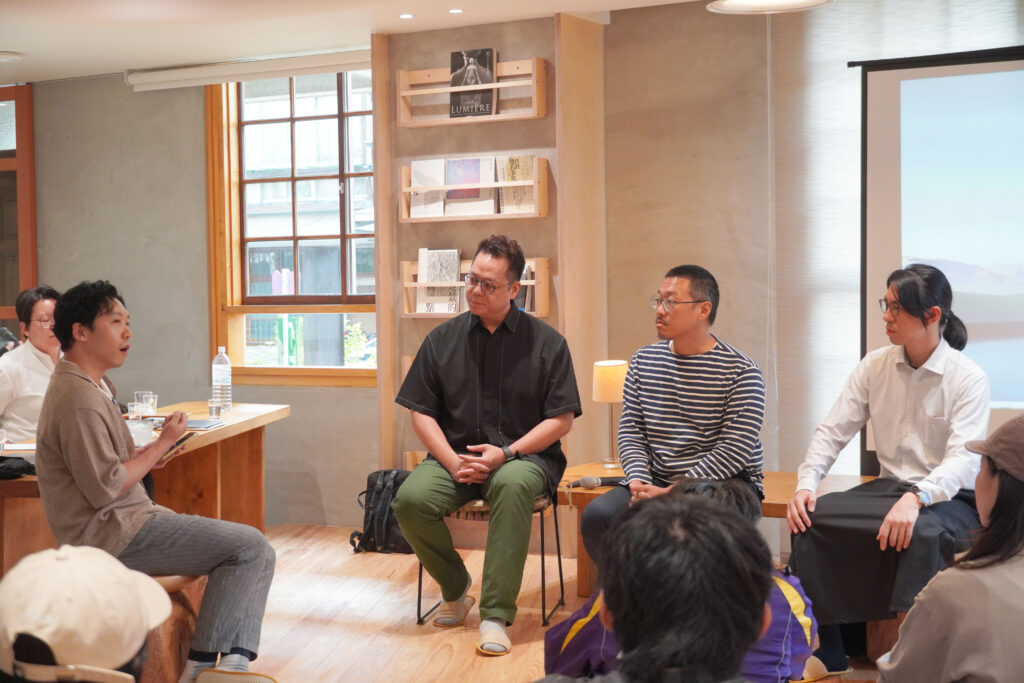
Writing Harbor Island’s Local Narratives
Cijin in Kaohsiung, about 300 kilometers away from the mountain town of Beipu, has vastly different historical contexts and cultural backgrounds, yet creates unexpected resonance under the keyword of ‘local regeneration’. This narrow island, located outside Kaohsiung Harbor, contains historical relics and maritime culture accumulated from the Ming and Qing dynasties, Japanese colonial period, and the Cold War era, and yet faces challenges amid changing times: with over 85% public land ownership, Cijin has developed within a unique framework—young people are migrating to other places in large numbers, and tourism resources are concentrated in specific areas, with beaches and seafood becoming almost the sole focus of tourism.
Professor Li I-Chih, who initially undertook an artist residency at Cijin’s ‘War and Peace Memorial Park Theme Hall,’ observed through routine questions from visitors and daily interactions with local residents that beyond the existing image as a tourist hub, Cijin needed a local narrative more closely connected to everyday life of the residents. While collaborating with the local government and university institutions to uncover Cijin’s cultural context through his studio ‘Time and Place Design,’ Professor Li also attempted to give it new life through cultural translation.
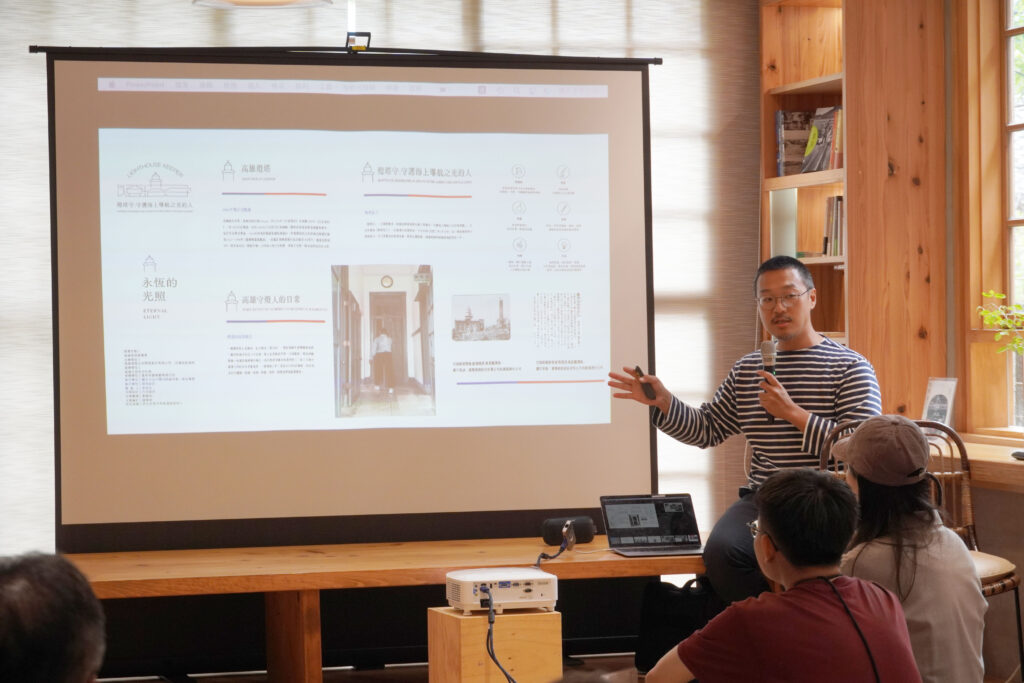
Taking the example of the ‘Tairyoki’ (or Manjo flag) culture, traditionally used to pray for blessings when launching new ships, this hand-dyeing craft has nearly faded away in contemporary times, yet remains an intangible cultural heritage carrying the context of local industry. Professor Li I-Chih and his team established the ‘San Jin Wu’ brand for this purpose. Beyond learning traditional skills from senior craftsmen, they extended it to micro-entrepreneurship concepts, creating distinctive products integrated into contemporary life and planning screen printing experiential tours, transforming this tangible symbol of local spirit into cultural content accessible to the public.
Alongside reviving traditional crafts, Professor Li I-Chih also turned his attention to preserving memories of everyday life, organizing collection activities for old local photographs and interviewing their owners, drawing out hidden family stories and historical imprints. In the Kaohsiung Lighthouse exhibition co-organized by the team and X-Basic Planning, these oral histories were integrated into an audio guide, allowing viewers to immerse themselves in the authentic life experiences of Cijin residents, thereby preserving and sharing collective local memories.
The team’s efforts to connect local cultural resources found a base for implementation at the ‘Cijin Technician Quarters’ (formerly used as a dormitory for the Navy’s Fourth Shipyard’s bachelor technicians). A series of USR projects by Sun Yat-sen University has gradually transformed this industrial heritage site—spanning 1,000 pings (approximately 3,305 square meters) with 8 buildings that had been idle for many years—into a multifunctional open space in recent years. Today, the Cijin Technician Quarters not only brings together cross-disciplinary craftspeople focused on local culture in the areas of shipbuilding, woodworking, beekeeping, and seafood education, but also houses the ‘The Big Habor School CC’ revitalization team established by Professor Li I-Chih and his partners. This team integrates diverse maritime cultures, introduces university educational resources, and connects with surrounding commercial districts, transforming the space into an exchange platform for the inheritance of skills, innovative experimentation, and acquisition of local knowledge.
Beyond revitalizing idle spaces, the team also focused on the local impressions that transportation nodes can shape, incorporating the ‘Cijin Ferry Terminal’ into a local regeneration network. Through organizing small harbor gatherings, setting up display windows for local specialty products, and planning small travel routes, they integrated Cijin’s cultural narrative into the daily flow of people entering and exiting the island, allowing the local texture to be touched and felt intuitively. From the deeply cultivated Technician Quarters base to the bustling transportation node, Professor Li I-Chih and his team have attempted to weave a more three-dimensional cultural network for Cijin at different scales, one closer to everyday life, moving toward a sustainable operational model that embodies local characteristics.
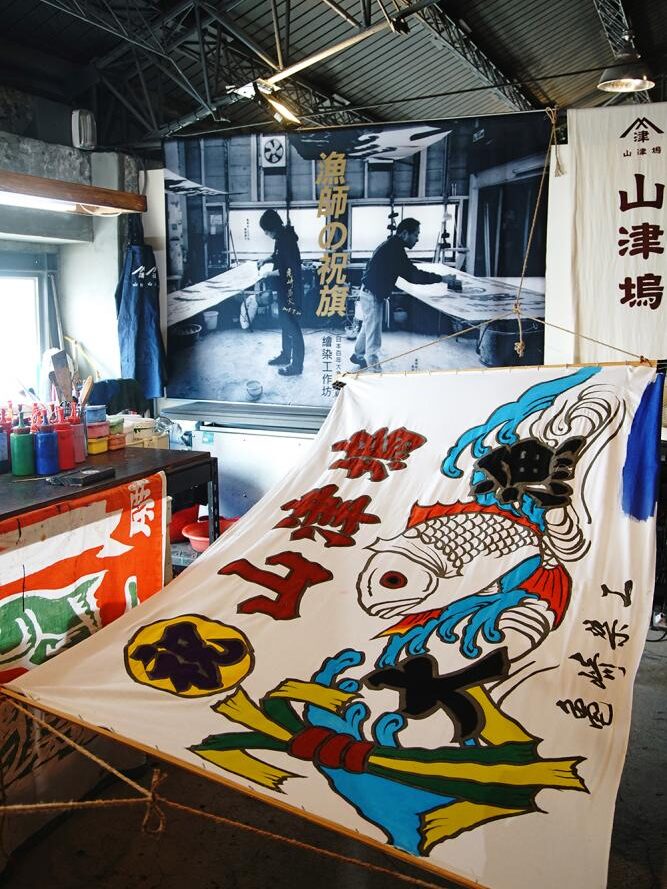
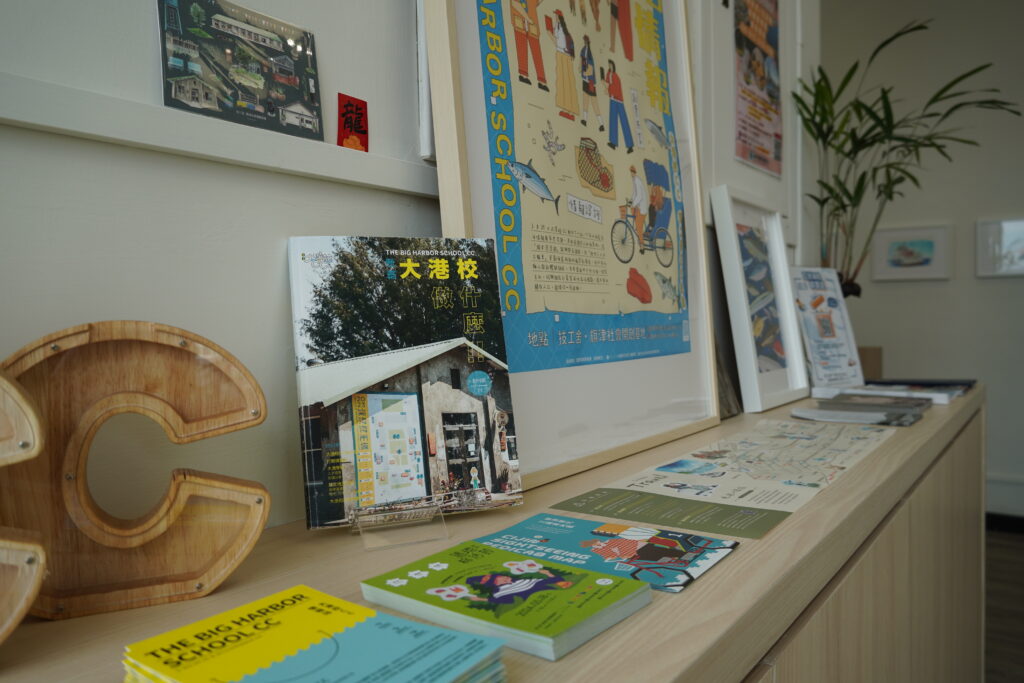

Connecting Building Restoration Systems
If Professor Li I-Chih’s sharing demonstrated ways to organize and write local narratives from intangible community contexts and present cultural foundations in transformed historical spaces, Director Hsiao Ting-hsiung and his team used “Chang-Yuan Hospital” as the core space to establish a practical model for preservation and revitalization of old buildings through tangible, phased restoration and conservation plans. This century-old building, which witnessed the modern medical and photographic history of the ancient town of Lukang, has a regenerative significance far beyond the restoration of its exterior appearance or functionality. It reflects local cultural contexts through a family’s micro perspective and, through its restoration process and position in the industry chain, has emerged as a key venue for establishing an “old building industry support system.”
Similar to the Beipu settlement preservation assessment planning project executed this time, X-Basic Planning also discovered this century-old building unexpectedly during the process of surveying potential old houses in Lukang. From initially reaching out to the property owner—Dr. Hsu Cheng-yuan—to establish a trust relationship, to persuading family members to apply for the Ministry of Culture’s “Private Old Building Preservation and Regeneration Project” to obtain funding for restoration, the regeneration process of Chang-Yuan Hospital encompassed not only structural restoration but also long-term, nuanced relationship building and collaborative partnerships.
During this period, the X-Basic Planning team conducted detailed surveys and historical investigations—from research on the building’s structure and decorative elements with a focus on preservation, to interviewing family members to trace the building’s history, and even restoring many architectural features that had become blurred over time through photographic records left by photographer Hsu Tsang-tse. The first section of the Han-style shophouse, which was restored initially, became the base for the team to implement their “keep-warm project.” During the restoration of the entire building, activities such as mural restoration workshops, historical exhibitions, and lectures continued to be held, allowing the public to engage with the old house during construction while maintaining the space’s operational momentum.
As the restoration project gained momentum, X-Basic Planning not only faced technical challenges but also had to address the concern of balancing cultural values in old buildings. As Director Hsiao Ting-hsiung said: “We don’t pursue preservation in isolated fragments, but rather ensure spaces are comfortable and functional while allowing the building’s inherent beauty to be carefully appreciated by people.” When addressing issues like roof leaks, decaying wooden beams, or even improving skylight designs, the team carefully seeks balance between preserving historical textures and strengthening weather resistance. Of course, today’s results weren’t achieved overnight. The design discussion and review process alone took nearly three years, involving regulatory compliance, technical discussions, and multi-party communications—all highlighting the complex aspects of restoring old buildings.


X-Basic Planning’s more fundamental concern is the preservation of craftsmanship employed to traditional buildings. Facing the widespread phenomenon of gaps in restoration talent across Taiwan, the team views Chang-Yuan Hospital as an opportunity to extend craftsmanship—the architectural design spanning the Qing Dynasty, Japanese colonial period, and post-war era, as well as restoration work covering carpentry, tile work, masonry, and mural painting, makes this century-old building an exemplary case of restoration of old houses. Through regular maintenance mechanisms in the future, they aim to create a sustainable practical field where these precious skills can be passed down generations continuously through successive maintenance efforts.
The soon-to-reopen Chang-Yuan Hospital has, during its lengthy restoration and revitalization process, already accumulated rich content including cultural curation, spatial experiences, and connections with the neighborhood. Under X-Base Planning team’s leadership, it will be transformed into a unique “Old House Hospital,” serving as a consultation center for issues associated with old buildings and a platform for the integration of industry resources. Homeowners facing preservation and restoration challenges, craftsmen seeking collaboration opportunities, or the public wanting to gain deeper understanding of relevant knowledge—all can find the technical connections and experiential references they need here. Based on this imaginative yet practical vision, the team hopes to establish a complete support system for old buildings in the ancient town of Lukang and throughout Taiwan.
The Possibilities of Beipu’s Revitalization
Whether it’s the local narratives of the harbor island Cijin or the old building restoration network in the ancient town of Lukang, both speakers shared years of experience that illuminated the possibilities for Beipu settlement’s revitalization. Through careful observation and interpretation of folk culture, profound value can be discovered in seemingly ordinary daily life. The rebirth of old spaces concerns not only the buildings themselves but also encompasses a systematic approach to preserving local context and industrial ecology. We hope this training course will stimulate more abundant innovative thinking and practical momentum for the rich cultural heritage of this land, allowing the many old houses in Beipu to not only present their historical textures, but also illuminate contemporary life with culturally rich warmth, reflecting the unique charm of the area.
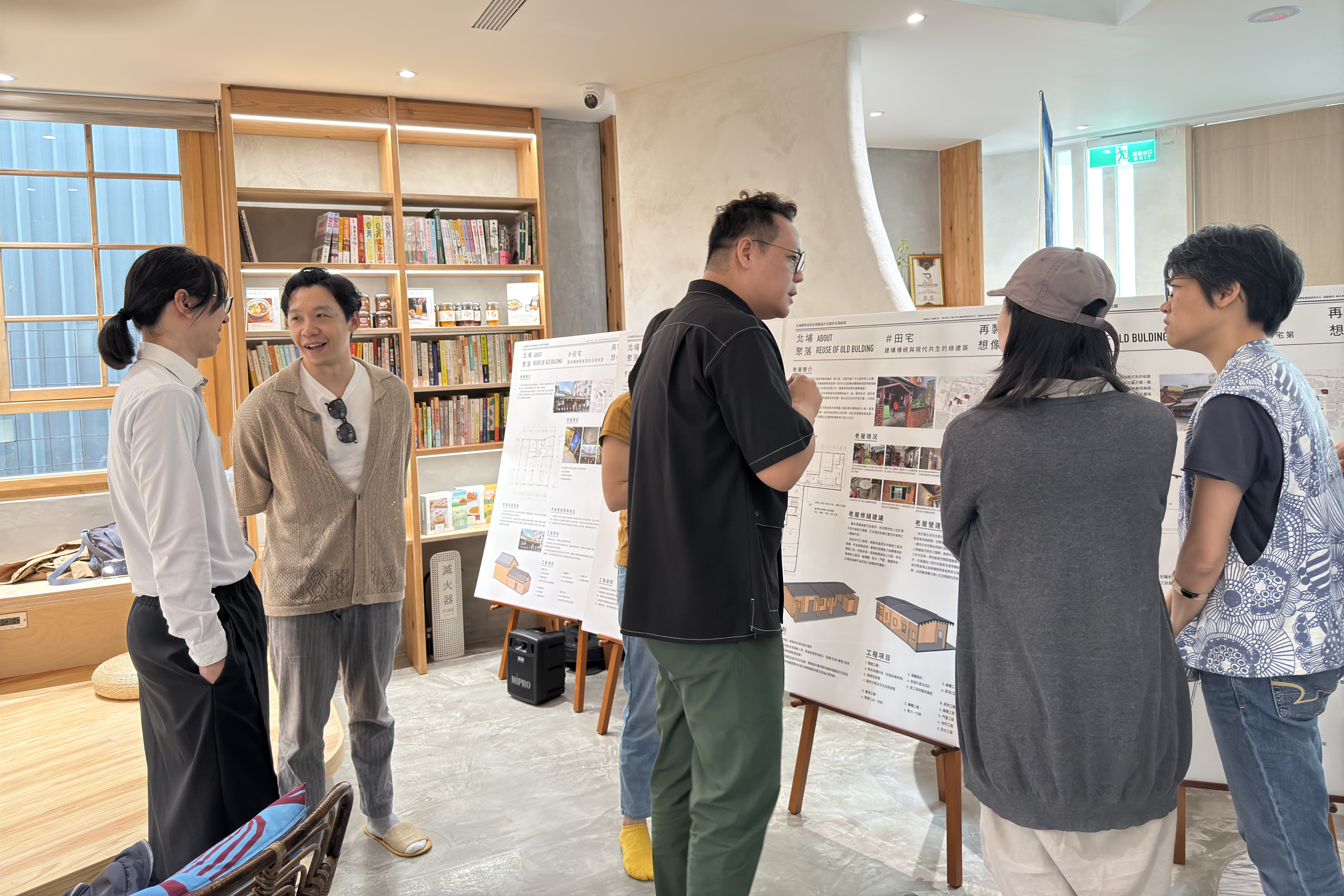
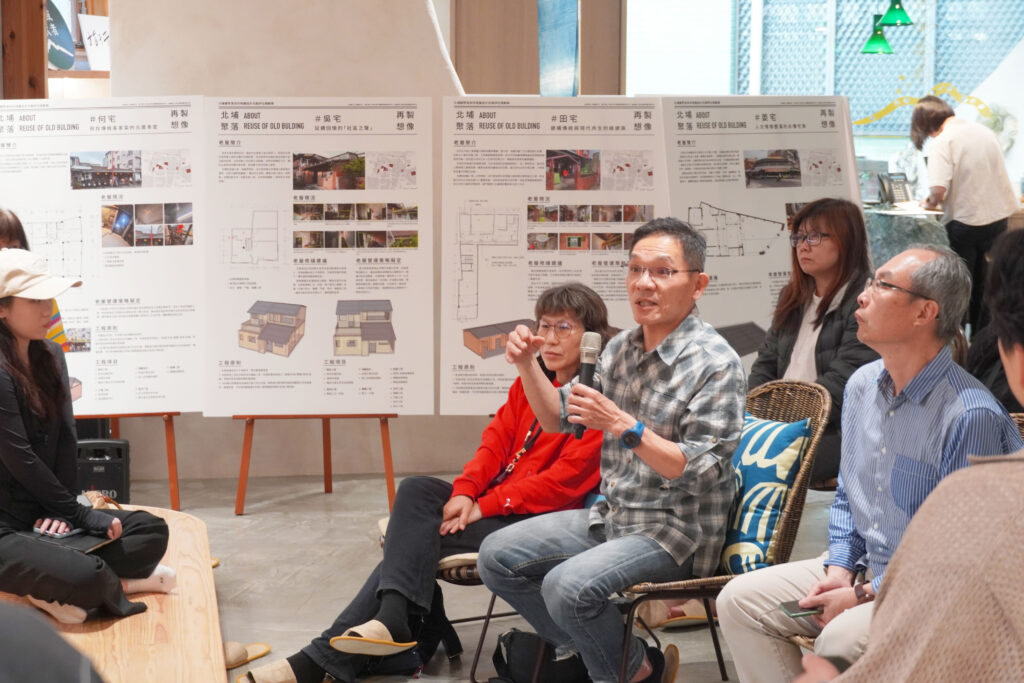
Further Reading
From Old Houses to Local Communities | 3/8 (Sat) Notes from the Beipu Old House Regeneration Training Course
Listening to Ocean Tides and Ship Sounds, with Local Development’s “Drumming Welcome” | 5/1 (Wed) Cijin Ferry Station Opening Tea Party
Enduring Heritage—Side Notes from the Chang-Yuan Hospital Mural Painting Restoration Workshop
Multi-perspective Views of Historical Sites | 10/23 (Wed) Notes from Professor Wang Chun-hsiu’s Lecture
